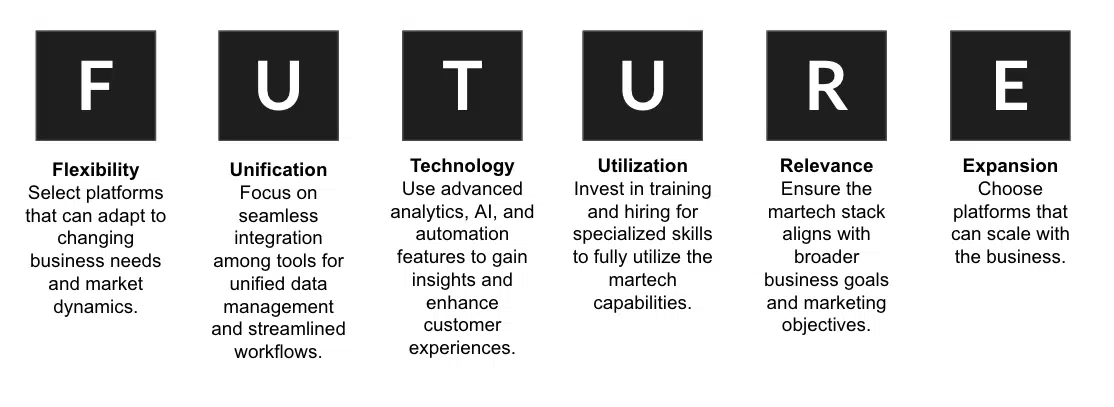Jason, director of product advertising at a world cybersecurity firm, celebrates a giant win. His product ranks because the third-fastest rising within the firm.
However there’s an issue — the corporate operates in silos, treating all merchandise as separate value facilities. Vanessa, his no-nonsense VP, calls for change. “We want a scalable platform. Get this proper, and we’re set for achievement.”
Jason’s mission is obvious: Lead the corporate by means of the ultimate stage of go-to-market maturity, platform-market match, the place built-in options drive buyer worth and place the corporate for long-term development.
The 3Ps mannequin of GTM maturity
Jason’s group is working by means of the 3Ps mannequin of go-to-market (GTM) maturity:
- Drawback-market match.
- Product-market match.
- Platform-market match.
Within the remaining stage, the corporate evolves from managing a number of separate merchandise to constructing one platform. This platform strategy permits the corporate to combine its merchandise right into a unified answer, fixing broader buyer issues and scaling effectively.
Platform-market match is about scaling, enhancing execution and monitoring key metrics by buyer teams. These teams, or cohorts, are based mostly on how prospects use the platform, serving to Jason’s crew customise options and improve adoption. This strategy meets a number of buyer wants with built-in options whereas permitting the corporate to develop effectively throughout its merchandise.

It’s not nearly promoting extra merchandise. The true problem is creating buyer worth with one unified platform that solves a number of buyer issues, making it simpler for them to undertake and scale.
Dig deeper: Rethinking match, development and go-to-market for the fashionable startup
Scaling with platform-market match
Jason’s purpose is to develop the corporate’s attain into new trade verticals and geographies. He is aware of that that is no small feat. The stakes felt increased daily and as his crew grew extra invested within the imaginative and prescient, Jason felt the stress to make each transfer depend.
“Merchandise can’t work in silos,” Vanessa reminds him. By integrating merchandise right into a unified platform, Jason clears the trail for patrons to undertake new options and develop their utilization as they develop. This streamlines gross sales, strengthens loyalty and expands income by means of seamless upgrades and bundled choices.
Making use of the 3Vs of ABM
Scaling a platform requires precision and account-based advertising (ABM) performs a vital position in reaching that. Jason focuses on quantity, focusing on fewer however higher-value accounts that may profit from the complete platform. “It’s about depth, not breadth,” Leila, the ABM Supervisor, reminds him. These accounts drive important income and develop into invaluable case research for different companies to comply with.
Worth is on the core of Jason’s strategy. He’s not simply promoting particular person merchandise; he’s bundling options that resolve ache factors throughout a number of areas of a consumer’s enterprise, rising cross-product worth and making the platform extra engaging and sticky for patrons.
Velocity can be essential in making certain ABM success. Jason’s crew emphasizes Velocity, working rapidly to maneuver accounts by means of the pipeline and ship worth quicker. Pipeline velocity doesn’t simply assist shut offers; it helps onboard prospects swiftly, creating alternatives for upselling as their wants evolve.
The next framework highlights how Jason applies the 3Vs of ABM — quantity, worth and velocity — to give attention to high-value accounts, create built-in options and drive quicker outcomes by means of the pipeline.
Supply: GTM Companions 3V’s of ABM
Constructing partnerships to increase attain
With the ABM technique in place and the platform aligned to satisfy buyer wants, Jason is aware of that scaling requires greater than inner assets. He companions with resellers, know-how integrators and trade consultants to increase the platform’s attain. These strategic alliances assist the platform penetrate new markets effectively whereas rising credibility in several verticals.
The FUTURE framework: Constructing a martech stack for scale
None of this works with out the correct tech basis. Jason wants a martech stack that may deal with a rising platform. That’s the place the FUTURE framework is available in. It isn’t only a roadmap — it’s the strategic gasoline to energy the tech stack and help platform growth.
- Flexibility: Adapt rapidly to completely different enterprise fashions.
- Unification: Combine advertising, gross sales and buyer success seamlessly.
- Technology: Use superior analytics to foretell buyer wants.
- Utilization: Practice groups totally to maximise device utilization.
- Relevance: Align instruments with each world objectives and native market wants.
- Expansion: Scale the stack easily because the platform grows.


Dig deeper: How advertising fuels the shift from problem-market match to product-market match
Key metrics for platform-market match
Jason, working carefully with the VP of finance, prioritizes rigorous monetary monitoring to make sure that each effectivity and effectiveness drive the GTM technique, given the present macroeconomic situations. Collectively, they assess key metrics that present how the platform is adopted and scaled throughout a number of merchandise.
Pipeline velocity is essential for understanding how briskly offers transfer by means of the pipeline, not only for one product, however throughout the platform. Jason’s crew makes use of a layered strategy, inspecting related metrics to know how every product impacts platform efficiency. Linking these metrics helps them spot synergies and bottlenecks, driving quicker development.
Buyer lifetime worth (CLV) is one other essential metric, which Jason tracks throughout merchandise to determine which drives probably the most worth. This sharpens the crew’s upsell and cross-sell methods, enhancing retention.
Cross-product engagement tracks what number of prospects use a number of merchandise. The layered strategy reveals how buyer behaviors throughout merchandise are linked, permitting Jason and the VP of finance to strengthen buyer retention and develop platform adoption.
Jason’s crew additionally screens web income retention (NRR), which measures how a lot income grows inside present accounts by means of upsells and cross-sells. This ensures that prospects are repeatedly adopting extra merchandise from the platform and contributing to long-term development.
To make sure general effectivity, Jason and the VP of finance observe the “magic quantity,” a monetary ratio that compares income development to buyer acquisition prices. This metric exhibits how effectively the corporate’s gross sales and advertising spend is driving new income, serving to them preserve sustainable development.
For broader monetary effectiveness, they depend on the “Rule of 40,” which balances the corporate’s income development charge with revenue margins. By making certain that each sum exceeds 40%, Jason’s crew stays centered on scaling the platform successfully with out sacrificing profitability.
Aligning for world platform success
Jason realizes that shifting up and to the correct to realize platform-market match is greater than promoting extra merchandise. It’s about seamless integration and delivering buyer worth that will increase adoption and utilization.
He is aware of success hinges on aligning your entire GTM income crew — product, gross sales, advertising, buyer success, enablement and income operations. For the platform technique to work, everybody should be unified round a shared purpose.
For Jason, this isn’t nearly hitting targets — it’s about proving his management and advancing his profession. Under are his key takeaways:
- Precision focusing on: Deal with the correct accounts and present worth rapidly.
- Cross-product worth: Hook prospects on the platform and your CLV grows.
- Scaling for development: Preserve your tech stack versatile, unified and able to scale.
Contributing authors are invited to create content material for MarTech and are chosen for his or her experience and contribution to the martech group. Our contributors work underneath the oversight of the editorial workers and contributions are checked for high quality and relevance to our readers. The opinions they categorical are their very own.

